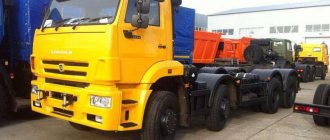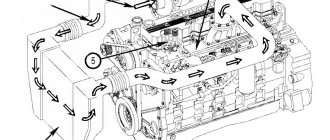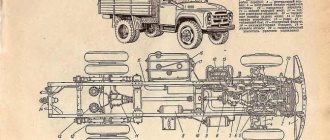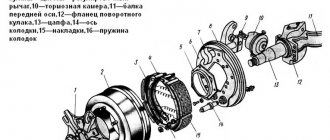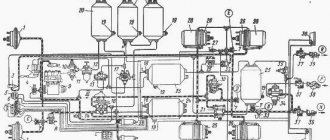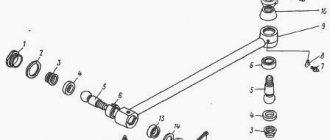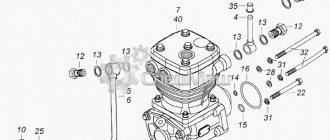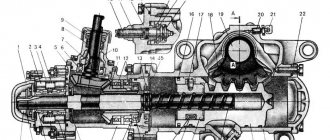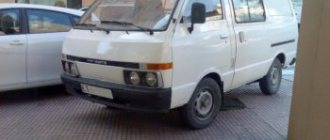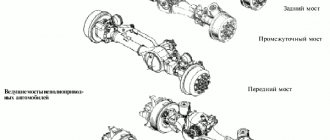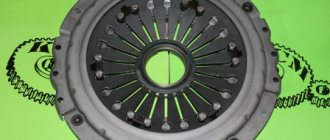Payment for goods and downloading of the book in electronic form (PDF format) is made on the website.
To do this, you need to find the book you are interested in and click on the “Buy” button. The price of the book is indicated on the button.
For convenience, the price on the website for residents of Russia, Belarus and Kazakhstan is presented in rubles.
For residents of Ukraine in hryvnias, and for all other countries - dollars.
After clicking on the “BUY” button, a payment window will open where you can select a payment system with which you can pay for the selected book using any bank card (Visa, MasterCard, MIR, etc.)
When you click on the “Pay by bank card” button, the Portmone payment system will open, which is the easiest way to make a payment.
In addition, the website offers four payment systems for payment:
- Yandex (payment from any bank cards, Yandex Money account, QIWI Wallet, terminals, etc.);
- Portmone (payment from any bank cards, Portmone account);
- PayPal (payment from any bank cards, PayPal account);
- WebMoney (payment from any bank cards, payment from WebMoney wallets).
Payment via Yandex Cashier
After selecting payment via Yandex, the Yandex Cashier payment system will launch, where you need to select a convenient payment method (bank card, QIWI, Yandex Money account, etc.)
After specifying payment details and confirming payment, payment for the goods will occur.
If you have a bank card in a currency other than the ruble, then the money will be debited from the card at the rate of the Central Bank of Russia at the time of the purchase.
This payment method is optimal for residents of Russia, Kazakhstan and Belarus.
Official website of the Yandex Kassa payment system https://kassa.yandex.ru
Design and operation of a balancing suspension
Balancer suspension (Fig. 2) is used on three-axle vehicles, sometimes on four-axle vehicles and multi-axle trailers. The bridges forming the balance suspension bogie should be located at a short distance from each other. A transverse axle 6 is attached to the car frame on brackets, at the ends of which a hub 7 is installed in bushings, which, in turn, is attached with stepladders to the middle part of the spring 5. The ends of the spring rest on the brackets 3 of the beams of the middle and rear axles 4 and 8. Since the longitudinal the movement of the ends of the spring in the brackets is not limited in any way; it is unloaded from the transmission of longitudinal forces and moments, but perceives lateral forces.
Longitudinal forces and moments are transmitted by a system of reaction rods - the upper 2 and the lower 1. Each of the rods is hinged (through pins with ball heads) connected to the bridge beam and to the car frame. Thus, the unit forms a complex multi-link, the necessary kinematics of which is provided by a large number of hinge joints.
With a balancer suspension, both rear axles form a bogie that can swing together with the springs on axle 6 and, in addition, as a result of spring deflection, each axle can have independent movements, ensuring good vehicle cross-country ability. The use of a balancer suspension allows, in addition, to improve the overall layout of the vehicle base, since only two springs are used to support the load-bearing system instead of four in a classic dependent leaf spring suspension.
Balancer suspensions are used, for example, on domestic KamAZ and KrAZ vehicles, on OdAZ-9370, OdAZ-9770 trailers, etc.
***
Air suspension of cars
Home page
- Applicant's page
Distance education
- Group TO-81
- Group M-81
- Group TO-71
Specialties
- Veterinary
- Agricultural mechanization
- Commerce
- Vehicle maintenance and repair
Academic disciplines
- Engineering graphics
- MDK.01.01. "Car design"
- Section map
- General structure of the car
- car engine
- Car transmission
- Steering
- Brake system
- Suspension
- Wheels
- Body
- Car electrical equipment
- Basic car theory
- Basics of technical diagnostics
- Fundamentals of hydraulics and heat engineering
- Metrology and standardization
- Agreecultural machines. Agreecultural equipment
- Basics of agronomy
- Transportation of dangerous goods
- Materials Science
- Management
- Technical mechanics
- Tips for graduate student
Payment via Portmone
After selecting payment through Portmone, the payment system will launch, where you need to select the payment method: bank card or Portmone account.
The price in the Portmone payment system is converted into dollars at the exchange rate of the Central Bank of the country where you are located.
If you have a bank card in a currency other than the dollar, then the money will be debited from the card at the rate of the Central Bank of your country at the time of the purchase.
After specifying payment details and confirming payment, payment for the goods will occur.
Official website of the Portmone payment system https://www.portmone.com
Payment via PayPal
After selecting payment via PayPal, the PayPal payment system will launch, where you need to select the payment method: bank card or PayPal account.
If you already have a PayPal account, then you need to log into it and make a payment.
If you do not have a PayPal account and you want to pay using a bank card via PayPal, you need to click on the “Create an Account” button - shown with an arrow in the picture.
PayPal will then prompt you to select your country and provide your credit card information.
After specifying the information required to make the payment, you must click on the “Pay Now” button.
Official website of the PayPal payment system https://www.paypal.com
Rice. 5.4. Front suspension spring for KamAZ vehicles: 1 - detachable eye; 2— bolt; 3 - bushing; 4 — grease fitting; 5 — front bracket; 6—bolt; 7 — front spring pad; 8—cup of main buffer; 9 — stepladder; 10— sheet overlay; 11 — rear bracket; 12 - cracker; 13 — rear bracket liner; 14 — cracker finger; 15 - bolt; 16— bolt bushing; 17 — shock absorber bracket; 18 - finger; 19 - bolt; 20—ear pad
The front suspension of the cars consists of two leaf springs and two telescopic shock absorbers.
The front suspension spring of KamAZ-5320 and KamAZ-4310 vehicles is made up of 15 sheets. The main leaf of the spring is rectangular in section, and the rest are T-shaped. This allows you to reduce the weight of the spring by 7... 10% while maintaining its characteristics. The front end of the spring is connected to the frame bracket using an eye and a pin. The detachable eye is attached to the main leaf of the spring with a bolt and a plate, which is secured to the eye with two bolts. A bushing is pressed into the eye. The pin connecting the eyelet to the bracket is secured with two bolts. The pin is lubricated through a grease nipple. The rear end of the spring slides and, through a lining riveted onto the main sheet, rests on a replaceable cracker pressed onto the bracket. To protect the bracket walls from wear, liners are installed on the fingers of the crackers, tightened with a bolt through a spacer sleeve.
In the middle part of the spring there is a pad through which the spring is attached to the front axle with two stepladders. The overlay has a stamping that fits into the recess of the first sheet. Each leaf of the spring with its extrusion fits into the recess of the underlying leaf, and the extrusion of the last leaf fits into the corresponding recess of the shock absorber bracket, which is, in turn, fixed on the front axle beam. To prevent lateral displacement, the spring sheets are additionally secured with clamps.
Rice. 5.5. Front suspension spring of the Ural-4t car: 1 — spring eye; 2 - wedge; 3 - nut; 4 — front bracket; 5 — spring buffer; 6 — rear bracket; 7 — liner; 8 - bolt; 9 — spacer sleeve; 10 — additional buffer; 11 - screed; 12 — overlay; 13 — spring ear pin; 14 - stepladder spring eye
To avoid hard impacts of the front axle on the frame, rubber buffers 8 are screwed to the lower flanges of the side members. Two buffers are installed on the KamAZ-4310 vehicle.
The front suspension spring of the Ural-4320 car (Fig. 5.5) is made up of 10 sheets. The main and root leaves of the spring are rectangular in section, and the rest are T-shaped.
The upward travel of the axle is limited by a rubber buffer on the frame side member. This additional buffer also reduces the tension in the spring when the vehicle brakes sharply, limiting its twist. The rear suspensions of KamAZ (Fig. 5.6) and Ural vehicles are similar in design.
Each spring with its middle part is attached by stepladders to the swinging support of the balancing device. The ends of the springs rest on supports. When the springs bend, their ends slide in the supports. Since the longitudinal movement of the ends of the spring in the brackets is not limited, it is unloaded from the transmission of longitudinal forces and moments acting in the longitudinal plane, but perceives lateral forces.
To limit the upward movement of the axles and soften their impacts on the frame, buffers are installed on the side member. Pushing forces and reactive moments are transmitted to the frame by six reaction rods (four lower rods and two upper ones).
Rice. 5.6. Rear suspension of the KamAZ-5320 car: 1 - middle axle; 2 — bracket for the upper reaction rod; 3 — bracket for the lower reaction rod; 4, 8 — brackets for installing Dec litter; 5—spring; 6 — suspension bracket; 7 — spring stepladder; 9 — rear axle; 10 — upper reaction rod; 11 14 — lower DeaK active rods; 12 — swinging support; 13 - support axis
Rice. 5.7. Shock absorber: a - working position during compression; b - working position during recoil; 1 - eye; 2 — valve body; 3 - compression valve; 4 — recoil bypass valve; 5 — tank body; 6 - working cylinder; 7 — recoil valve; 8 - piston; 9 — compression bypass valve; 10 - rod
The hinges of the reaction rods are self-clamping, consisting of ball pins, internal and external liners and springs that lift them. The covers are secured with bolts, making it easy to disassemble and reassemble the hinges. To protect the hinges from water and dirt, rubber seals are installed. For lubrication there are oil nipples located in the reaction rod cover.
The balancing device consists of two axles, pressed into the brackets of the swinging supports, and shoes with bushings made of antifriction material. Brackets 6 of the balancing device are connected on KamAZ vehicles with a tie and secured with studs on the rear suspension brackets, which are bolted to the frame side members. The rear suspension of the Ural-4320, unlike the one considered, has a balancing device with one axle, pressed into the balancer bracket and acting as a coupler.
The shoes are secured to the axles with split nuts and bolts. The nuts of the coupling bolts are self-locking; There is a hole in the shoe cover with a plug for oil filling.
Shock absorbers for telescopic cars. The resistance force of the shock absorber during the compression stroke is significantly less than during the rebound stroke, which is ensured by the flow sections of the valves.
With smooth compression (Fig. 5.7, a) the rod moves the piston down. The bypass valve opens and the liquid flows into the upper cavity, encountering little resistance. However, all the liquid cannot enter the upper cavity, since a rod is inserted into the working cylinder. Therefore, part of the liquid, equal in volume to the part of the rod moving into the cylinder, flows through the calibrated holes in the end of the compression valve 3 and the channels of the valve body 2 into the compensation chamber, slightly increasing the pressure of the air in it.
Calibrated holes create resistance for the liquid that is proportional to the square of its flow rate. During sudden compression, the liquid does not have time to flow through the calibrated holes, the pressure in the working cylinder increases and the compression valve opens. As a result, the resistance force of the shock absorber increases less rapidly.
Rice. 5.8. Steered axle of the KamAZ-5320 vehicle: 1 - bridge beam; 2 — transverse steering rod; 3 — king pin; 4 - plain bearing; 5 — steering knuckle; 6 — steering knuckle stop; 7 — steering knuckle lever to the bipod rod of the steering mechanism; 8—adjusting washers; 9 — steering knuckle lever to steering linkage rod
With a smooth recoil, the rod with the piston moves upward. Fluid flows into the space under the piston through holes in the piston and calibrated holes in the valve. In addition, part of the liquid is returned from the compensation cavity through the recoil valve. During sudden recoil, fluid flow is ensured by opening the recoil valve. The degree of opening of the recoil valve depends on the sharpness of the recoil stroke: the sharper the recoil, the further the valve moves away from its seat.
Payment via WebMoney
After selecting payment via WebMoney, the payment system will launch, where you need to select the payment method: bank card or WebMoney wallet.
If you already have a WebMoney wallet, then you need to log into it and make a payment.
If you do not have a WebMoney wallet and you want to pay in another way, you need to select any of the methods that WebMoney offers and make the payment
After specifying payment details and confirming payment, payment for the goods will occur.
Official website of the WebMoney payment system https://www.webmoney.ru/
Downloading a book
After successfully completing the payment (by any method) and returning to the KrutilVertel store from the payment system website, you will be taken to the successful payment page:
On this page you need to indicate your e-mail, where access to download the book will be sent.
If you are already registered on our website, then simply follow the link to your personal account.
The book you purchased will be in your personal account, from where you can always download it.
Please note that after making the payment, you need to return back from the payment system website to the KrutilVertel website.
If for some reason you did not return back to the site and closed the payment system tab with a message about the successful completion of the payment, please let us know - we will send you a letter indicating access to download the book.
Problems when paying with bank cards
Sometimes difficulties may arise when paying with Visa/MasterCard bank cards. The most common of them:
- There is a restriction on the card for paying for online purchases
- A plastic card is not intended for making payments online.
- The plastic card is not activated for making payments online.
- There are not enough funds on the plastic card.
In order to solve these problems, you need to call or write to the technical support of the bank where you are served. Bank specialists will help you resolve them and make payments.
That's basically it. The entire process of paying for a book in PDF format on car repair on our website takes 1-2 minutes.
If you still have any questions, you can ask them using the feedback form, or write us an email at [email protected]
Design and operation of dependent suspension
Dependent suspensions are widely used on the rear and front axles of trucks and buses, as well as on the rear axles of many passenger cars. Dependent suspensions are widely used due to the fact that they are capable of not only satisfactorily ensuring the smooth running of the car, but also transmitting traction and braking forces from the wheels to the supporting system of the car.
In Fig. Figure 1 shows the dependent suspension of the ZIL-431410 truck. The front axle of the car is suspended from the frame on two springs with hydraulic shock absorbers 5 (Fig. 1, a). Each spring consists of eleven leaves made of silicon steel. In the middle part of each sheet there are two stampings that protect them from mutual movements in the spring. For the same purpose, the spring leaves are tightened with clamps 3. The front end of the spring is hingedly connected to the frame through pin 14, for which eye 12 is attached through the cover 11 with two bolts and a stepladder 2. A sleeve 13 is pressed into it, through which pin 14, fixed in the bracket. To lubricate the pin there is an oiler 15. The middle part of the spring is attached to the bridge beam 9 by means of stepladders 10.
When deflected, the rear end of the spring moves freely in the eyes of bracket 7, while resting on the block 21.
To protect the sliding main sheet from wear, an auxiliary pad 8 is riveted at its end. A support block is installed on the pin 20. The ends of the pin are located in two liners 19. The liners, secured in the bracket 7 with a coupling bolt 23 with a spacer sleeve 22, serve to protect the bracket from abrasion by the ends of the springs.
Spring deflections are limited by persistent rubber buffers 4 and 6.
The shock absorber 5 is pivotally connected to the front axle and frame using a pin 17 and a rubber bushing 16.
The rear axle is suspended from the car frame on paired springs (Fig. 1, b), of which two springs 27 are the main ones, and two springs 26 are additional (sprungs). The main spring is attached to the beam 32 of the rear axle using stepladders 28 with pads 29 and 31. The front and rear ends of the main spring 27 are attached to the frame in brackets 24 and 30 in the same way as the ends of the front suspension spring.
If the car is not loaded, only the main spring works, in this case the ends of the additional spring 26 do not touch the brackets 25. When the car is loaded, the frame is lowered as a result of the deflection of the main spring, and the ends of the additional spring rest against the brackets 25, providing additional support for the supporting system of the car. In this case, all springs work - both main and additional.
On GAZ trucks, the connection of the main sheets to the frame is ensured not through overhead lugs, but through thick-walled rubber pads. This connection does not require lubrication and helps improve the smooth running of the car, since the rubber liners additionally provide damping between the parts.
***
